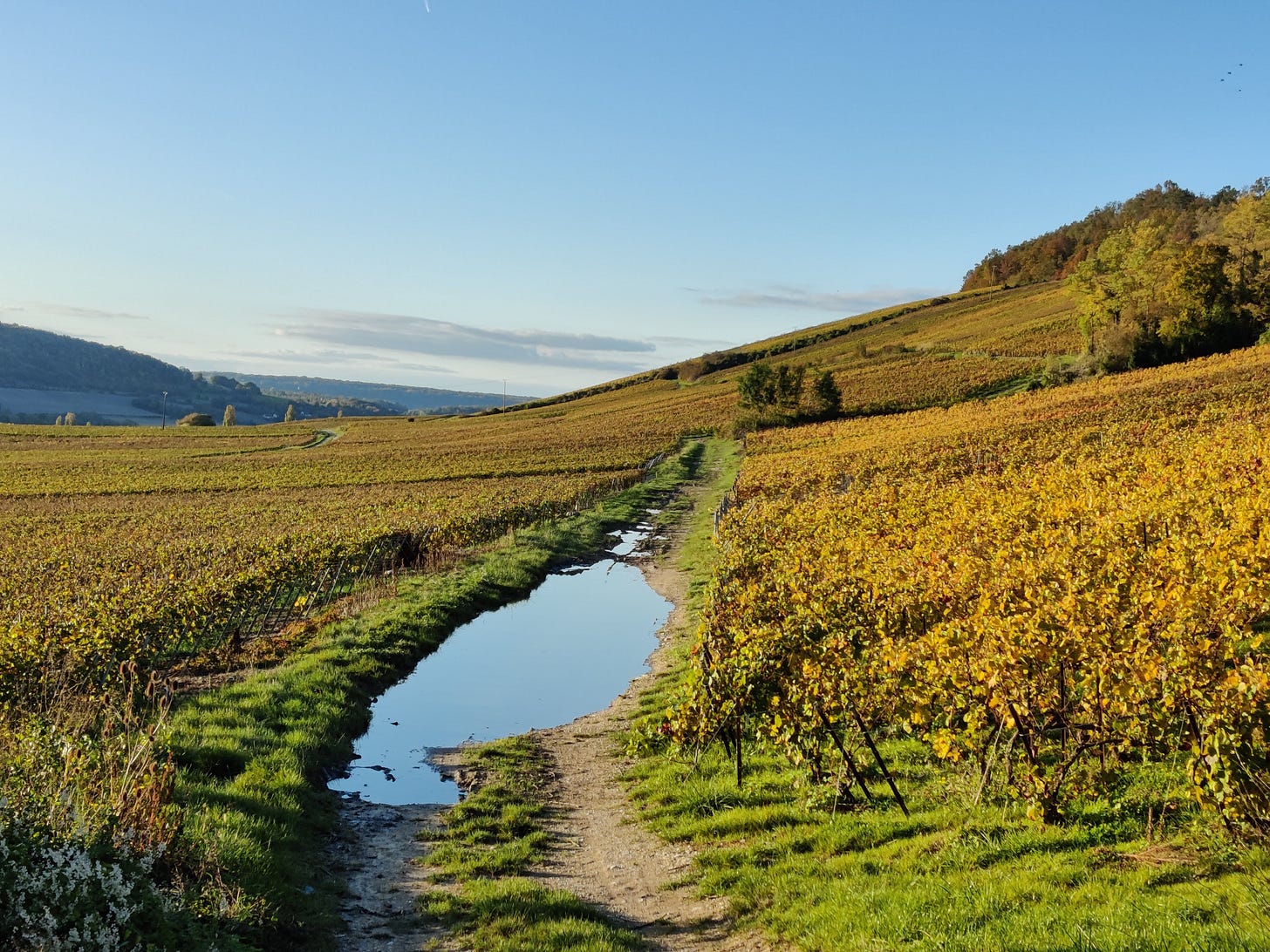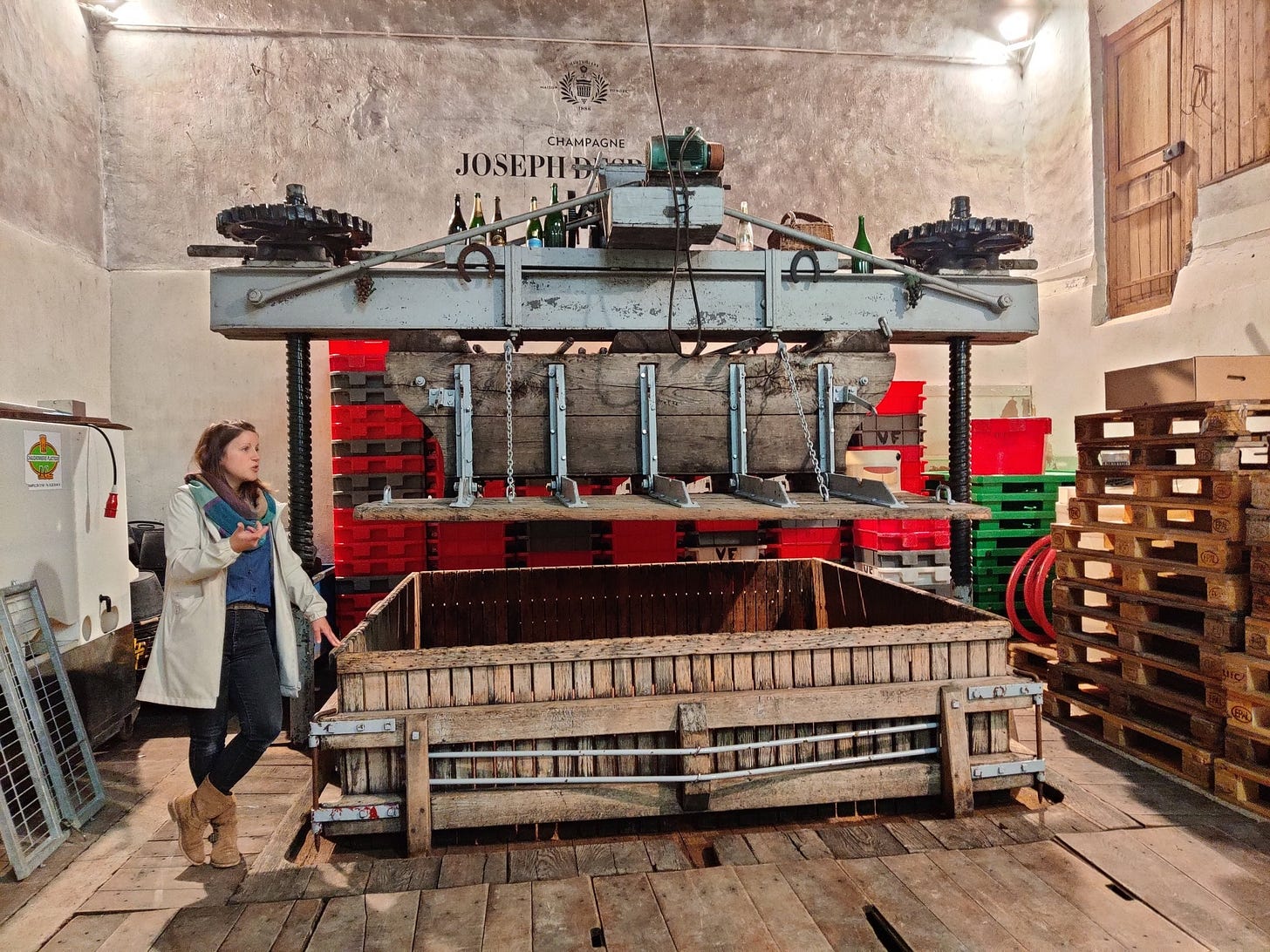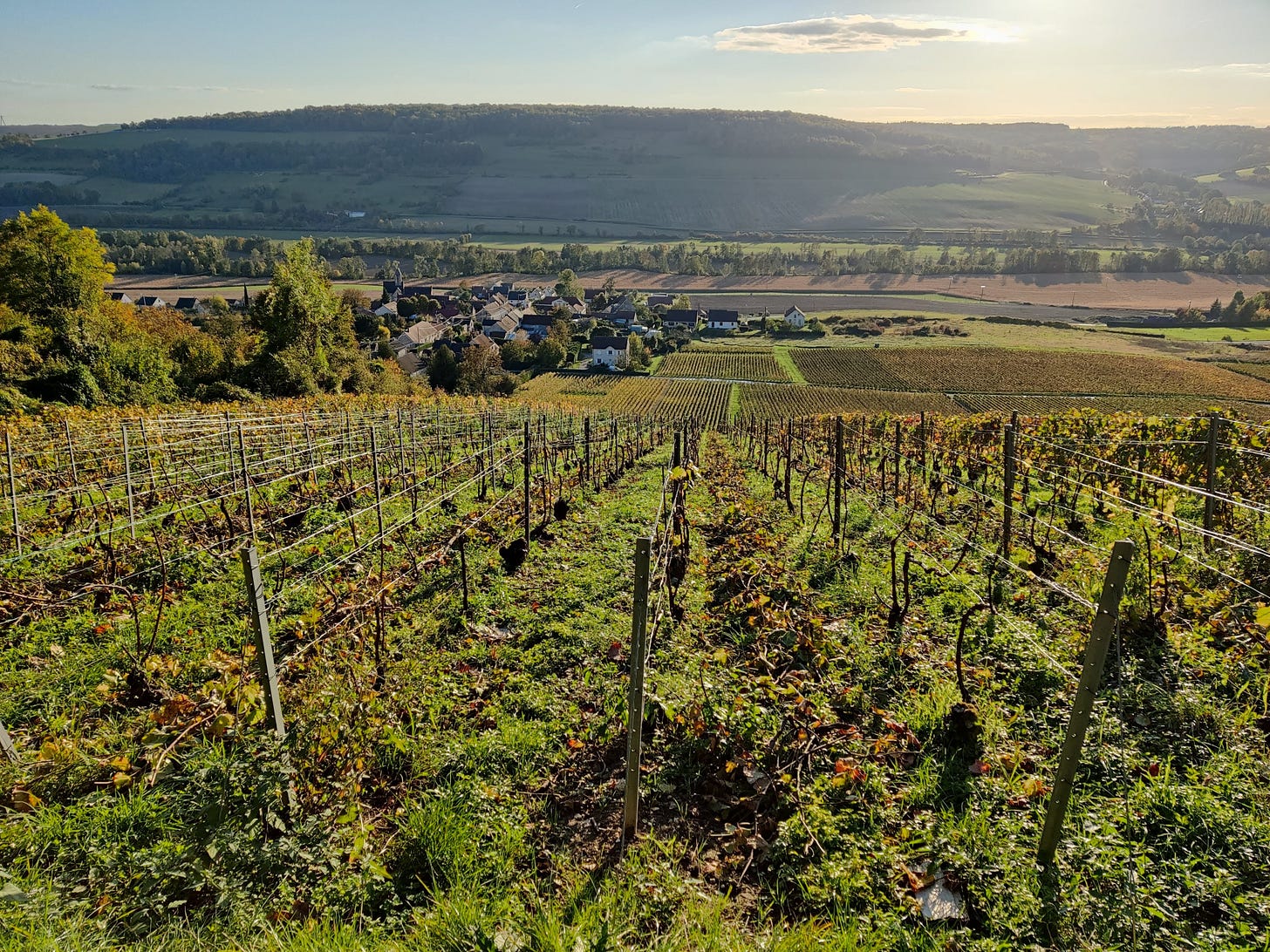What’s Bubbling?
A newsletter about food systems, climate change and everything connected to them
The climate, that’s what.
I realise the first entry may read like a first-world problem - and it is - but I’m also hoping this is one of those instances where people with deep pockets and deeper power will finally do something because it’s gonna affect their lifestyles. I can dream, can’t I?
Last weekend, I had the great fortune to finally catch up with some good friends after COVID-19 scuppered multiple reunion attempts. We did the reunion in style - in France’s champagne region - and of course, it would be remiss of us if we didn’t sample the famous local produce.
So we visited a family-run Champagne house that owns the region’s oldest oak wine press, dating back to 1888 and with a capacity of 4,000 kilos.
The wine was delightful but what caught our ears was how higher temperatures are affecting the vineyard, now in its sixth generation.
Sabine, the wife of one of the two brothers who now run it, told us how shifting weather patterns have forced them to adjust harvest times. In the old days, harvest was in October but for the past decade or so, they’ve been harvesting in September.
Then last year, amid post-lockdown heatwaves in northern and western Europe, the harvest moved forward even further to August.
This year? There has been too much rain in the Champagne region, so they only completed harvesting in early October. This Washington Post piece lists other troubles producers faced this year, including frost, mildew and hail.
I’ve written plenty of stories of how this unpredictability is making life very difficult for small scale and family farmers in Africa and Asia and this was a reminder, if I ever needed one, that while we may live on different continents, we all live on the same planet that is facing the same stresses.
Good COP, Bad COP
We don’t know which this one - which begins Sunday - will be, although initial signs bubbling underneath the rhetoric aren’t very encouraging.
The British government, which is hosting COP26, lowered expectations last month by saying how difficult it would be for rich countries to keep their financing promises to poor countries, and the country’s chancellor didn’t mention climate once in his recent spending review and budget.
In addition, vaccine inequality could shut out activists from developing nations and I’ve struggled to find any push on food systems issues as a key way to reduce emissions. But the lead up to the climate negotiations have brought us some really interesting stories around climate change.
The NYT has a handy and comprehensive explainer on COP26 and what is at stake and here’s a nice piece from Bloomberg on the history of the site where the talks in Glasgow will be held.
Two come from my Kite Tales partner-in-crime Kelly Macnamara at AFP.
One of them looks at plankton, teeny tiny organisms that are crucial for marine life, their movement pole-wards to cooler climes as the oceans warm and the scientists studying them.
It cites IPCC’s warning that reductions in the biomass of phytoplankton - aka algae - could eventually cause reductions in marine life by roughly 5 to 17%. This could, in turn, wreak havoc with fisheries.
In addition, increasing ocean acidification as a result of climate change could make it harder for shellfish to build strong shells, an Icelandic scientist I spoke to years ago said. As a big consumer of crustaceans, I’m really worried about that bit.
So yeah, not only is climate change coming for the champagne, it's also coming for the oysters!
A second one, less directly related to food but still interesting, is on the World Weather Attribution (WWA) group that publishes research linking current weather events to man-made climate change.
Fishmeal Trouble
Continuing with the aquatic theme, this piece by Shamsheer Yousaf and Monica Jha at Scroll.in gives a fascinating look at the supply chain of fishmeal, an essential ingredient of aquaculture.
From the harbour of Cuddalore in the southern Indian state of Tamil Nadu to the shiny plates of American diners, it traces how small fishes that are integral to the diet and nutrition of millions of poor people in India are now being sold to companies that process them “to make feed for farmed fish and shrimps”.
The boom in aquaculture in Andhra Pradesh and India’s subsequent title as “the world’s second-largest exporter of shrimp by volume… and the largest exporter by value”, thanks to consumers’ consistently growing demands for fish and prawns in their diets, directly contributed to this, the authors said.
“India utilised 1.25 million tonnes of marine fish to feed shrimps that were exported in 2018-’19,” they said. According to experts, “this fish would be sufficient to meet the iron and zinc requirements of 35 million children, in a country that has the highest number of wasted children”.
The FAO has said farmed fish already accounts for half of global consumption and some scientists, like Johnathan Napier at Rothamsted Research, has been working to replace fishmeal with something a bit more land-based. I wrote a bit about his work here but this NutritionInsight piece has more details.
Thanks to Numlock Newsletter for highlighting this story.
An Epic Read
I’m leaving you with a story link that has very little to do with food or climate but an amazing piece of journalism and writing. Anand Gopal’s dispatch from early September in The New Yorker called The Other Afghan Women is vivid, sweeping, infuriating and meticulously researched.
It brings to life the day-to-day living of rural Afghan women under successively brutal leaders. It will cost you 45 minutes but I assure you it is absolutely worth it.
As always, have a great weekend! Please feel free to share this post and send tips and thoughts on twitter @thinink, to my LinkedIn page or via e-mail thin@thin-ink.net.





